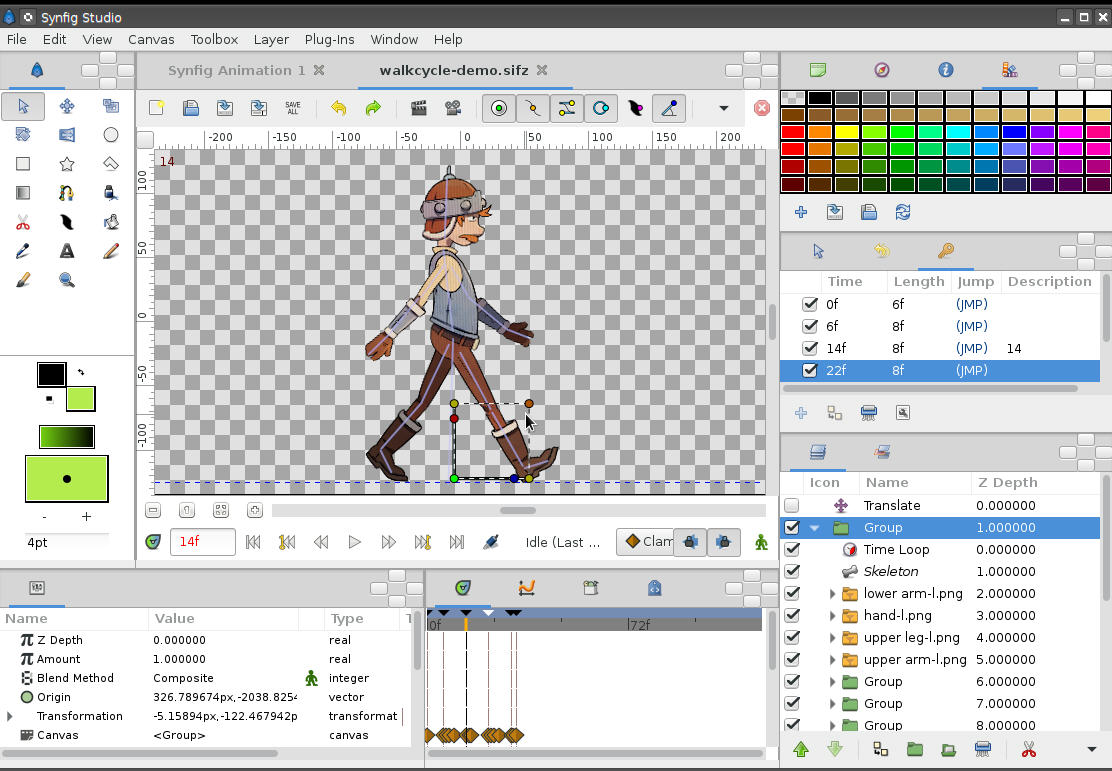Synfig, an open-source vector animation software, empowers creators to bring their visions to life with a robust set of tools. Its unique approach to animation, based on vector graphics, provides unparalleled flexibility and scalability. Synfig’s history dates back to the early 2000s, and its community continues to foster its growth and development.
Table of Contents
Synfig is a powerful tool for creating 2D animations, offering a wide range of features including keyframe animation, layers, transformations, and effects. It is particularly well-suited for creating high-quality, scalable animations that can be used for a variety of purposes, from web graphics and video games to film and television.
Synfig Studio’s Impact on the Animation Industry

Synfig Studio, a free and open-source 2D animation software, has emerged as a significant player in the animation industry, leaving a lasting impact on techniques, workflows, and accessibility. Its unique features and community-driven development have made it a compelling alternative to commercial animation software, fostering innovation and empowering independent animators.
Influence on Animation Techniques and Workflows
Synfig Studio’s influence extends beyond its technical capabilities, shaping animation techniques and workflows in several ways.
- Vector-Based Animation: Synfig Studio’s vector-based approach enables animators to create scalable and resolution-independent animations, allowing for seamless scaling and re-sizing without compromising quality. This eliminates the need for pixel-based manipulation, a significant advantage for high-resolution and multi-platform animation projects.
- Procedural Animation: Synfig Studio’s powerful procedural animation capabilities empower animators to create complex and dynamic animations using mathematical expressions and algorithms. This eliminates the need for tedious frame-by-frame animation, streamlining workflows and allowing for greater creative control.
- Non-Destructive Editing: Synfig Studio’s non-destructive editing workflow allows animators to make changes without affecting the original source data. This facilitates experimentation, revision, and collaboration, ensuring that changes can be easily undone or adjusted without jeopardizing the integrity of the animation.
Synfig Studio’s Comparison with Other Animation Software
Synfig Studio is a free and open-source 2D animation software that offers a unique approach to animation, focusing on vector-based animation. It’s often compared to other popular animation software like Blender, After Effects, and Toon Boom Harmony, each with its own strengths and weaknesses. This section will explore these comparisons to help you understand the advantages and disadvantages of using Synfig Studio over other options.
Comparing Key Features, Synfig
To better understand the differences between Synfig Studio and other animation software, let’s examine some key features. The following table provides a concise comparison of Synfig Studio, Blender, After Effects, and Toon Boom Harmony, highlighting their core functionalities, strengths, and weaknesses.
| Feature | Synfig Studio | Blender | After Effects | Toon Boom Harmony |
|---|---|---|---|---|
| Animation Type | Vector-based | Vector and raster-based | Raster-based | Raster-based |
| Strengths | Scalable and resolution-independent animation, flexible and non-destructive workflow, powerful bone system for character animation | Versatile 3D software with animation capabilities, powerful modeling and rendering tools, open-source and free to use | Industry-standard compositing and motion graphics software, extensive plugin ecosystem, robust workflow for visual effects | Specialized in traditional animation workflows, powerful tools for rigging and character animation, strong integration with other software |
| Weaknesses | Steeper learning curve, limited support for raster graphics, fewer plugins and community resources compared to commercial software | Can be overwhelming for beginners, animation tools are not as specialized as dedicated animation software | Primarily focused on post-production, animation capabilities are not as robust as dedicated animation software | Primarily focused on traditional animation workflows, can be expensive for individual users |
Factors to Consider When Choosing Animation Software
When choosing between Synfig Studio and other animation software, several factors come into play.
- Animation Style: Synfig Studio’s vector-based approach is ideal for creating scalable and resolution-independent animation, making it suitable for animated films, cartoons, and motion graphics. If you’re looking for traditional animation workflows or photorealistic rendering, other software like Toon Boom Harmony or After Effects might be better suited.
- Budget: Synfig Studio is a free and open-source software, making it an attractive option for budget-conscious individuals and studios. Other software like Blender is also free, while After Effects and Toon Boom Harmony require a subscription or purchase.
- Learning Curve: Synfig Studio has a steeper learning curve compared to other animation software due to its unique vector-based workflow. If you’re new to animation, you might find it easier to learn software like Blender or After Effects.
- Workflow and Features: Consider the specific workflow and features you need for your project. Synfig Studio excels in vector-based animation and character rigging, while other software like Blender offers a wider range of tools for 3D modeling, rendering, and compositing.
- Community Support: The size and activity of the software’s community can influence your decision. While Synfig Studio has a dedicated community, it’s smaller compared to the communities surrounding Blender, After Effects, and Toon Boom Harmony.
Conclusive Thoughts

With its user-friendly interface, powerful animation tools, and vibrant community, Synfig offers an accessible and engaging platform for both novice and experienced animators. Whether you are creating simple animations for personal projects or complex sequences for professional productions, Synfig provides the tools and resources to bring your creative ideas to life.
Synfig is a powerful open-source 2D animation software, ideal for creating complex animations with its node-based system. While Synfig excels in its technical capabilities, for simpler design tasks, you might prefer the user-friendly interface of canva free. Canva’s intuitive tools allow you to quickly create graphics, presentations, and social media content, complementing Synfig’s animation focus.
